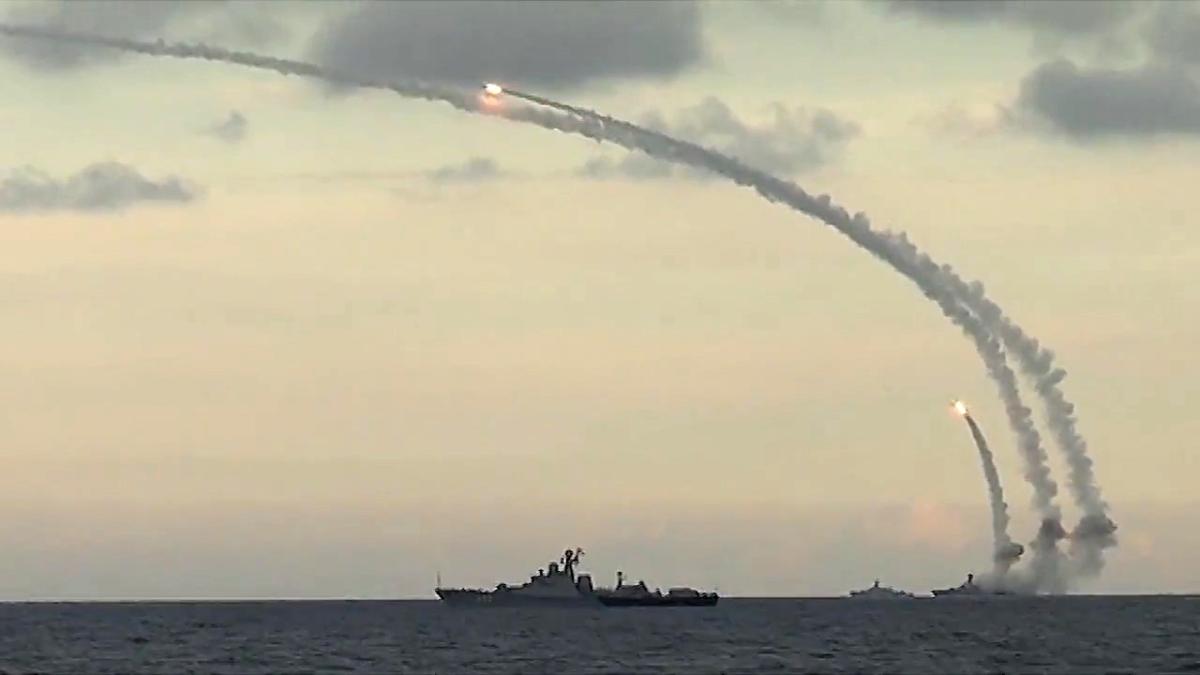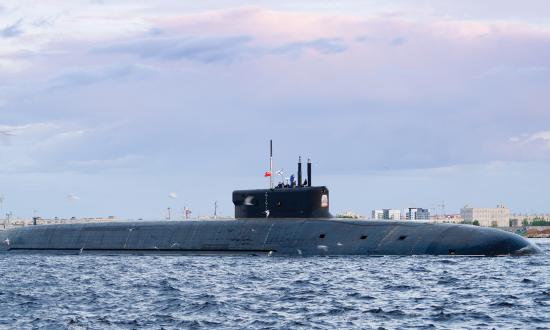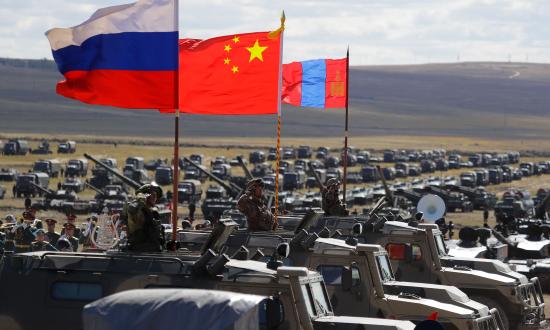On the morning of 7 October 2015, 26 Russian ship-launched Kalibr cruise missiles were fired at Islamic State targets in northern Syria. While this targeted attack was nothing out of the ordinary for Russia, which has been steadily increasing its military footprint in the Middle East during the ongoing crisis in Syria, the location from which the missiles were fired was unexpected: the Caspian Sea. Since 1722, the Caspian Sea, the largest landlocked body of saltwater on earth, has hosted the Caspian Flotilla, a Russian Navy fleet command. Russia’s increasing investment in the Caspian Flotilla is a significant shift from its former role as a littoral defense force to a newly offensive fleet capable of supporting Russian operations in the Middle East and the Black Sea. This is a concerning development that increases Russia’s power projection capabilities and could prove a threat to U.S. regional allies and the U.S. Fifth and Sixth Fleets.
First established as a method for Peter the Great to expand Russia’s sphere of influence in the Persian region to the south of the Caspian Sea, the Caspian Flotilla had existed as a small-scale coastal-defense and search-and rescue force until a massive reduction in size following the collapse of the Soviet Union. Despite its near collapse less than 30 years ago, Russia has decisively reframed the Caspian Flotilla’s narrative to enhance Russia’s strategic abilities in the Caspian region, the Middle East, and the Black Sea. Stationed on the Caspian Sea—which also borders Iran, Azerbaijan, Turkmenistan, and Kazakhstan—the flotilla is located within striking distance of hotspots in Syria to the southwest and Crimea to the northwest. Its recent transformation has made it relevant after decades of neglect.
The Caspian Flotilla Today
Once a coastal-defense force focused on search-and-rescue and law enforcement operations, the Caspian Flotilla has been transformed into a small but effective fleet capable of projecting power well beyond Russia’s Caspian shores. The flotilla consists of 28 warships: two guided missile frigates, eight corvettes, four patrol boats, seven minesweepers, six landing craft, and one gunboat. The Caspian Flotilla’s significant increase in technology and offensive capability began in 2011, when the Kremlin declared that 16 new warships and missile boats would be delivered by the end of 2020. As a result, Russia’s latest naval technology has been pushed to the Caspian—notably in the form of Buyan-M–class corvettes (delivered late 2014) armed with the Kalibr 3M54 cruise missiles used to strike Syria, and the Russian Navy’s newest amphibious warfare platform, the Dyugon-class landing craft. Amphibious warfare has been a cornerstone of the flotilla’s recent upheaval. In May 2018, Russian central military command transferred an additional 32 amphibious armored personnel vehicles to the Caspian Flotilla—a strategic move that increased the flotilla’s ability to conduct landings anywhere along the Caspian shoreline.
While an influx of new warships, missile-strike platforms, and sea-to-shore capabilities have strengthened the Caspian Flotilla’s reach and relevance, the its reinvention does not stop there. In April 2018, the flotilla’s headquarters was moved 550 miles south from the city of Astrakhan to Kaspiysk, placing naval forces in a better position to launch offensive operations in the Middle East. Furthermore, Russian military command added an air arm to the flotilla, consisting of Beriev Be-200 amphibious aircraft and Mil Mi-14 helicopters, traditionally tasked with antsubmarine operations. While Admiral Sergey Pinchuk, commander of the Caspian Flotilla, claimed that the addition of an air wing was aimed at bolstering the fleet’s search-and-rescue capabilities and ability to provide medical care, the recent use of the flotilla as a launching point for strikes into Syria and the relocation of its headquarters much farther south toward the Middle East indicates the air arm may be intended as an offensive supplement.
Apart from the Caspian Flotilla’s significant logistical and material upgrades, its recent tasking and increased mobility should alarm the United States and U.S. allies in the region. In May 2018, Caspian Flotilla warships were deployed to the Azov Sea, located directly northeast of Crimea and adjacent to the Black Sea, using the Volga-Don Canal. Furthermore, the recent addition of sea-to-shore amphibious vehicles greatly increases the flotilla’s ability to provide military reinforcements to Russia’s occupation of the Crimean Peninsula. The Caspian Flotilla’s ability to be dispatched to the Crimean region in support of Russia’s Black Sea Fleet demonstrates its mobility and flexibility, and the potential it could have to tip the scales in an armed conflict in either the Middle East or Crimea, both of which have already seen prolonged Russian military action. In addition, the Caspian Flotilla’s profile has risen considerably within Russia. Once excluded from central military festivities and training exercises, it was prominently featured in the 2019 Victory Day Parade and has been involved in recent large-scale war gaming exercises.
Locally, the Caspian Flotilla’s significant upgrades have been an unwelcome development for Ukraine and many of Russia’s Caspian Sea neighbors. The flotilla’s recent expansion has meant that Russia now dominates the Caspian, vastly outmatching every bordering nation in naval firepower and sea-to-shore capability. The Caspian Sea’s location places it at the critical juncture between Central Asia, the Caucasus, and the Middle East, and the strengthening of the flotilla’s amphibious landing abilities sends a strong signal to nations in the region. Caspian littoral states such as Kazakhstan and Azerbaijan have increasingly cooperated with the United States and Turkey, respectively, and the Caspian Flotilla’s amphibious upgrades could be a message intended to keep the former Soviet states in Russia’s sphere of influence.
From a broader strategic perspective, the Caspian Flotilla’s increasing reach and tilt toward offensive maneuvers poses a fundamental challenge to the United States and its NATO partners. By nature of the Caspian Sea’s landlocked geography, the Caspian Flotilla is entirely sheltered from U.S. and allied navy freedom-of-navigation and power-projection operations in contested waters around the world. Furthermore, a 2014 treaty signed by Russia, Iran, Azerbaijan, Kazakhstan, and Turkmenistan officially barred foreign navies from deploying to the Caspian Sea, preventing NATO from keeping the Caspian Flotilla’s offensive capabilities in check.
The Caspian Flotilla also presents a threat to the Navy’s Fifth and Sixth Fleets. The addition of Mi-14 helicopters tasked with antisubmarine operations and massive upgrades in antiship cruise-missile technology could complicate U.S. Navy operations in the eastern Mediterranean, Persian Gulf, and Black Sea. Coupled with the context of recent U.S. involvement on the ground in Syria and the assassination of Qasem Soleimani that stoked tensions with Russia’s ally Iran, the Caspian Flotilla is a risk to U.S. operations throughout the Middle East and would undoubtedly play a role in a U.S. conflict with Iran. An understanding the Caspian Flotilla’s offensive reinvention and reach is critical to any U.S. Sea Service officer operating in the Fifth and Sixth Fleets and must be counteracted to ensure favorable U.S. and NATO outcomes in the Middle East and Black Sea.






